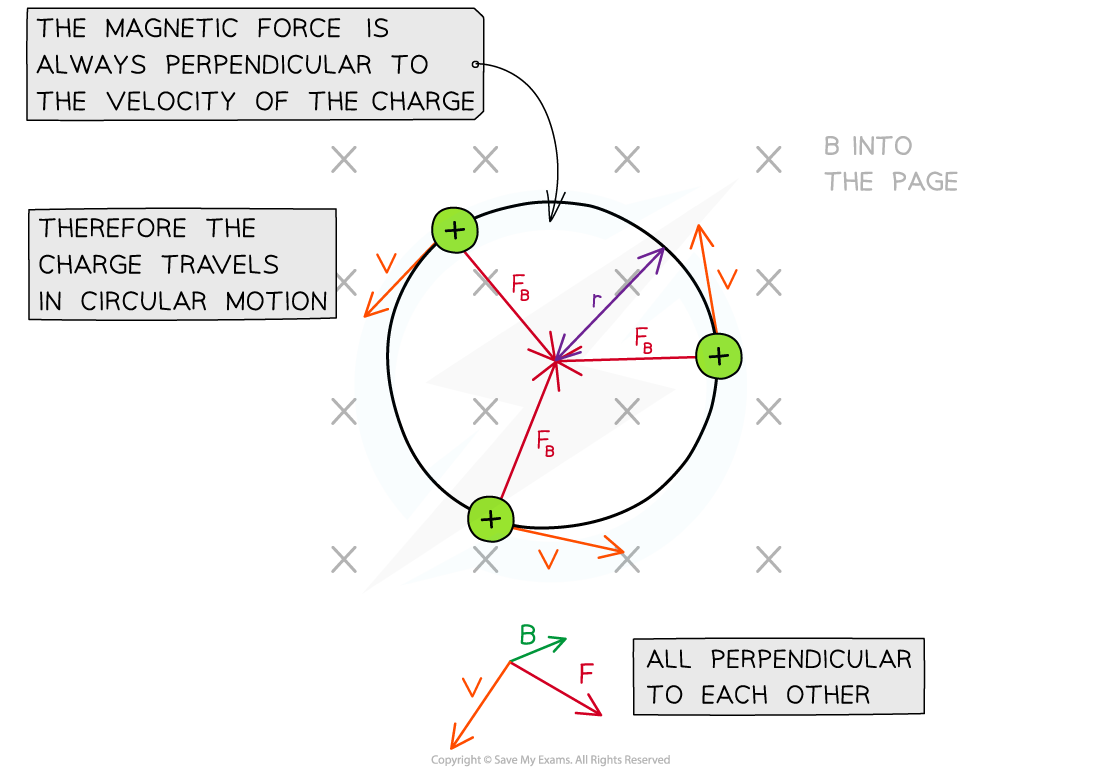Motion of Charged Particles in a B Field (OCR A Level Physics): Revision Note
Exam code: H556
Motion of a Charged Particle in a Magnetic Field
A charged particle in uniform magnetic field which is perpendicular to its direction of motion travels in a circular path
This is because the magnetic force F will always be perpendicular to its velocity v
F will always be directed towards the centre of the path in circular motion

A charged particle moves travels in a circular path in a magnetic field
The magnetic force F provides the centripetal force on the particle
The equation for centripetal force is:

Where:
F = centripetal force (N)
m = mass of the particle (kg)
v = linear velocity of the particle (m s−1)
r = radius of the orbit (m)
Equating this to the magnetic force on a moving charged particle gives the equation:

Rearranging for the radius r obtains the equation for the radius of the orbit of a charged particle in a perpendicular magnetic field:

This equation shows that:
Faster moving particles with speed v move in larger circles (larger r): r ∝ v
Particles with greater mass m move in larger circles: r ∝ m
Particles with greater charge q move in smaller circles: r ∝ 1 / q
Particles moving in a strong magnetic field B move in smaller circles: r ∝ 1 / B
The centripetal acceleration is in the same direction as the centripetal (and magnetic) force
This can be found using Newton's second law:
F = ma
Worked Example
An electron with a charge-to-mass ratio of 1.8 × 1011 C kg−1 is travelling at right angles to a uniform magnetic field of flux density 6.2 mT. The speed of the electron is 3.0 × 106 m s−1.
Calculate the radius of the circular path of the electron.
Answer:

Examiner Tips and Tricks
Make sure you're comfortable with deriving the equation for the radius of the path of a particle travelling in a magnetic field, as this is a common exam question.
Similar to orbits in a gravitational field, any object moving in circular motion will obey the equations of circular motion. Make sure to refresh your knowledge of these equations.

Unlock more, it's free!
Did this page help you?